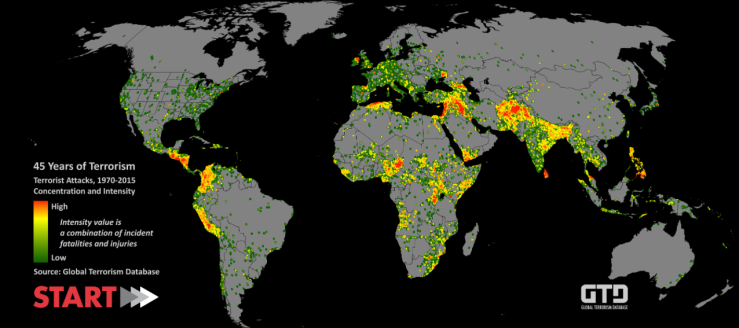“Perhaps most important, coldly efficient bombings tear at the fabric of trust that holds societies together.”
Recently, terrorist groups have been moving towards utilizing suicide bombers in their attacks. We might ask why they would send their own people into an attack to die? And how do they recruit people who are willingly blowing themselves up? It turns out that there is some sort of strategy, or so it seems, behind using these suicide bombers.
These suicide bombings happen much more frequently in the Middle East than anywhere else in the world. In the Middle East and Asia, suicide bombings are more popular in terms of terrorism, but in the United States these “martyrs” tend to be armed gunmen who plan to die “via ‘suicide by cop.’”
“The fundamental characteristics of suicide bombing, and its strong attraction for the terrorist organizations behind it, are universal: Suicide bombings are inexpensive and effective. They are less complicated and compromising than other kinds of terrorist operations. They guarantee media coverage. The suicide terrorist is the ultimate smart bomb.”
The element of surprise is probably the biggest advantage that suicide bombers have. However, the fact that the attackers do not have to plan an escape route is also a major advantage that suicide bombers have over “conventional” terrorists. There is no physical profile for suicide bombers, as they can be any age, gender, or class. Sadly, even women and children have been recruited as suicide bombers since they are lesser suspects than men.
While there are no identifiable physical characteristics of suicide bombers, they can be profiled based on other traits. Suicide bombers are usually “’introverted, loners, quiet, non-gregarious, and inhibited’ as well as ‘socially marginal and downgraded by the people around them.’” These recruits are vulnerable people who are easily manipulated.
“A count released through ISIS propaganda channels said 90 suicide bombings were carried out in January alone.”
ISIS is calling these suicide bombings “martyrdom operations executed by Islamic state fighters.”
To make matters worse, suicide bombers are getting better at hiding their bombs. They used to be easier to spot, but now it is getting harder and harder. Suicide bombers used to carry bombs in duffel bags or backpacks, but now they have different strategies, keeping the bombs hidden in places like vests, belts, or even cars and trucks.
“Suicide bombs are even more effective because they present no immediate target for retributive justice, which can create political pressure for the victim country to engage in excessive or futile punitive military actions; this is often the very goal of the attack. With gunman attacks, the response and the hunting-down of the gunmen is itself a satisfying act of retribution.”
So the question still stands: Why are these people willing to kill themselves?
One of the most popular and recent suicide terrorist attacks in America is the attack that happened in Chattanooga in 2015. Muhammed Abdulazeez opened fire at a military center and a Navy facility killing several members of the United States military and wounding three others, including a police officer. It turns out that Abdulazeez was suffering from depression, drug usage, and was having suicidal thoughts.
“’Martyrdom’ has become a dangerous loophole: it is the only way Islamic suicide attackers believe they can guarantee their own death, and yet go to heaven instead of hell.”
Previously, research suggested that instead of seeing these bombers as people who are ready to kill themselves, they should be viewed as the “psychological equivalent” of soldiers who are willing to “risk their lives – and die, if necessary – for a cause they passionately believe in.” However, this research had been proven false, as most of these suicide missions are carried out by people with serious mental illnesses.
The answer to decreasing these attacks may lie in searching for an alternative option to killing these gunmen. If police can safely capture them instead of killing them, there may be less of an incentive for these terrorists to commit the crime:
“Along with broad efforts to change global perceptions of suicide attackers, it is thus worth considering whether there is some less lethal method we could employ to more often keep these individuals alive. For those who desperately want to be killed in action, this might actually make them reconsider.”
-Alexa Saffelle
